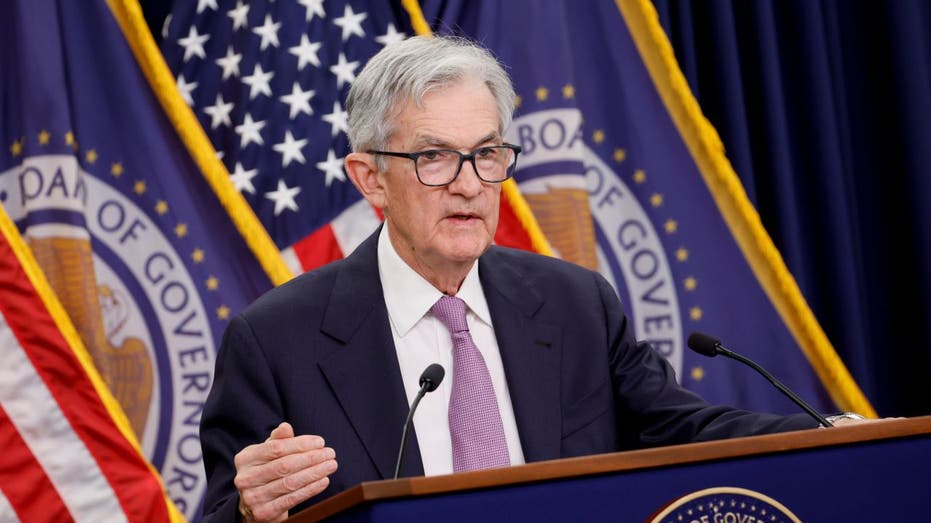First Trust Advisors chief economist Brian Wesbury reacts to Fed Chair Jerome Powell saying he won’t resign if President-elect Trump asks on ‘Making Money.’
Inflation ticked slightly higher in October as prices remained stubbornly high for consumers, giving Federal Reserve policymakers more data to consider ahead of their meeting next month.
The Labor Department on Wednesday said that the consumer price index (CPI) — a broad measure of how much everyday goods like gasoline, groceries and rent cost — rose 0.2% in October from the prior month and was up 2.6% from a year ago.
Economists polled by LSEG predicted that inflation would come in at 0.2% in October while ticking up to 2.6% on an annual basis. The annual figure was up compared with a month ago, when the headline rate was 2.4%, while the monthly price growth was unchanged from September.
So-called core prices, which exclude more volatile measurements of gasoline and food to better assess price growth trends, were up 0.3% on a monthly basis in October and 3.3% from a year ago — both of which were unchanged compared with last month’s readings.
FED’S KASHKARI WARNS MASS DEPORTATIONS COULD DISRUPT LABOR AT SOME BUSINESSES
Consumer prices were up 2.6% in October compared with a year ago. (Justin Sullivan/Getty Images / Getty Images)
The report showed signs that inflationary pressures in the U.S. economy are persisting despite progress over the past year in bringing inflation closer to the Federal Reserve’s 2% target.
High inflation has created severe financial pressures for most U.S. households, which are forced to pay more for everyday necessities like food and rent. Price hikes are particularly for lower-income Americans, because they tend to spend more of their already-stretched paycheck on necessities and therefore have less flexibility to save money.
Over half of the rise in CPI was caused by shelter prices, which rose 0.4% in October on a monthly basis, while food prices were up 0.2% and energy prices were unchanged. Core CPI’s rise was due in part to prices for used cars and trucks rising by 2.7% compared with September.
FED’S POWELL STAYING PUT EVEN IF TRUMP HAS ANOTHER IDEA
Food prices were up 0.2% on a monthly basis and 2.1% from a year ago. Food away from home was up 3.8% annually, while food at home was up just 1.1% in comparison. The largest price increase among food items was for eggs, with prices up 30.4% on an annual basis in October even though they declined 6.5% from September.
Energy costs are down 4.9% compared to a year ago, with gasoline down 12.4%. However, electricity prices are up 4%, while utility gas service is up 4.5%.
Shelter prices are also up 4.9% from last year, while the cost of transportation services increased 8.2% and medical care services by 3.8% in that period. Each of those rose 0.4% on a monthly basis.
FED CUTS INTEREST RATES BY QUARTER POINT

Fed Chair Jerome Powell and central bank policymakers cut interest rates by 25 basis points last week. (Ting Shen/Bloomberg via Getty Images / Getty Images)
The latest CPI data comes after the Federal Reserve announced its second consecutive interest rate cut at its meeting last week. The central bank cut rates by 25 basis points, leaving the benchmark federal funds rate at a range of 4.5% to 4.75%. Rates had been at the highest level since 2001 before the Fed cut rates for the first time in four years in September with a 50 basis point cut amid signs of easing inflation.
Although the October headline inflation figure showed a slight uptick from 2.4% to 2.6%, the data being in line with economists’ expectations has boosted the likelihood of the Fed continuing with its rate-cutting plans in the near-term.
“No surprises from the CPI, so for now the Fed should be on course to cut rates again in December,” said Ellen Zentner, chief economic strategist for Morgan Stanley Wealth Management. “Next year is a different story, though, given the uncertainty surrounding potential tariffs and other Trump administration policies. The markets are already weighing the possibility that the Fed will cut fewer times in 2025 than previously thought, and that they may hit the pause button as early as January.”
GET FOX BUSINESS ON THE GO BY CLICKING HERE
Markets now see an 82% probability of a 25 basis point cut in December, up from nearly 59% a day ago, according to the CME FedWatch tool. Chances for a further 25 basis point cut in January ticked higher from over 17% to about 28%, while the probability of the Fed holding steady in January after a December cut of that size also rose from 53% to 60%.
Credit: Source link




